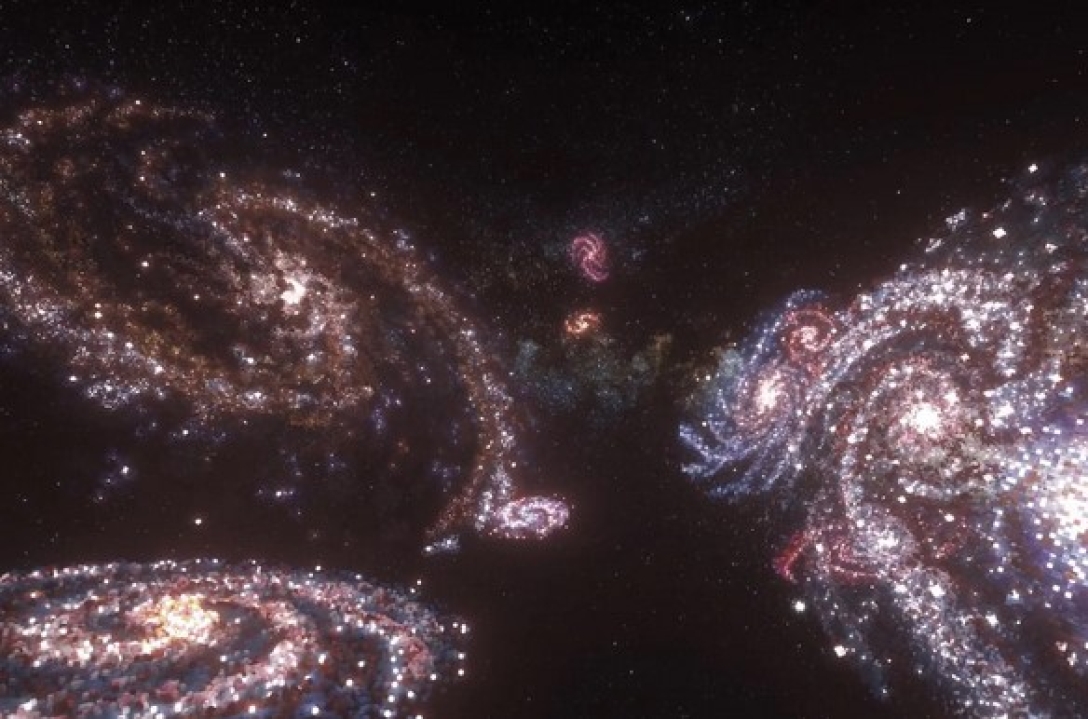We misunderstand the universe: a new discovery suggests the presence of an unknown force.
Astronomers have utilized the Webb Space Telescope to investigate the rate of the Universe's expansion. It remains a mystery why the cosmos is currently expanding faster than expected according to the cosmological model that describes the early history of the Universe. While Webb's data have confirmed previous findings from the Hubble Space Telescope regarding the speed of cosmic expansion, one of the major issues in cosmology persists. Consequently, scientists believe that there was a mysterious component in the early Universe that could explain everything. The study has been published in the Astrophysical Journal, reports Space.
Since the late 1990s, researchers have known that the Universe is expanding at an accelerating rate, driven by a somewhat unclear force known as dark energy. The rate of the Universe's expansion is determined by a value known as the Hubble constant.
Astronomers, using the Webb telescope, aimed to verify past data regarding the Hubble constant, where discrepancies identified by the Hubble telescope were revealed. The discrepancies in the Hubble constant arise because different measurements yield varying values. This has been termed the Hubble problem.
According to scientists, the gap between the observed rate of the Universe's expansion and the predictions of the standard cosmological model indicates that we do not fully understand the Universe. Astronomers cannot completely comprehend the evolution of the cosmos until they determine the cause of the Hubble problem. This issue becomes particularly evident when scientists examine the cosmos on larger scales.

To determine the Hubble constant, astronomers utilize distances to type Ia supernovae or variable stars. These objects effectively illustrate how the cosmos is expanding. Scientists also employ measurements of the cosmic microwave background to understand the rate of the Universe's expansion during its early stages, in order to predict what it should be today.
Measurements of the Hubble constant for the local Universe indicate a higher rate of expansion than expected according to the Lambda-CDM model. This is the standard cosmological model for the evolution of the Universe.
Based on this model, the Hubble constant should be approximately 68 km/s per megaparsec. However, data from the Hubble telescope show that this value lies between 70 km/s and 76 km/s per megaparsec, with an average of 72.8 km/s per megaparsec. One megaparsec equals 3.26 million light-years, and one light-year is equivalent to 9.4 trillion kilometers.

The authors of the new study utilized carbon-rich Cepheid variable stars, as well as the brightest red giant stars, to verify the Hubble constant using the Webb telescope.
As a result, they obtained the most accurate value of the Hubble constant for the local Universe and confirmed that the Hubble telescope's data is correct. The study indicated that the rate of cosmic expansion in the local Universe is 72.6 km/s per megaparsec, which generally aligns with the findings of the Hubble telescope.
Still, in the early Universe, the rate of cosmic expansion was different, meaning the Hubble problem has not been resolved. Scientists believe that an additional component needs to be incorporated into the current standard cosmological model to explain everything.
Perhaps this component, an unknown mysterious force affecting the expansion of the early Universe, is early dark energy. It could have provided an unexpectedly significant acceleration for the expansion of the cosmos shortly after the Big Bang. Although the discrepancy in the Hubble constant between the early Universe and the present may also be explained by the unusual properties of dark matter or the existence of unknown particles.